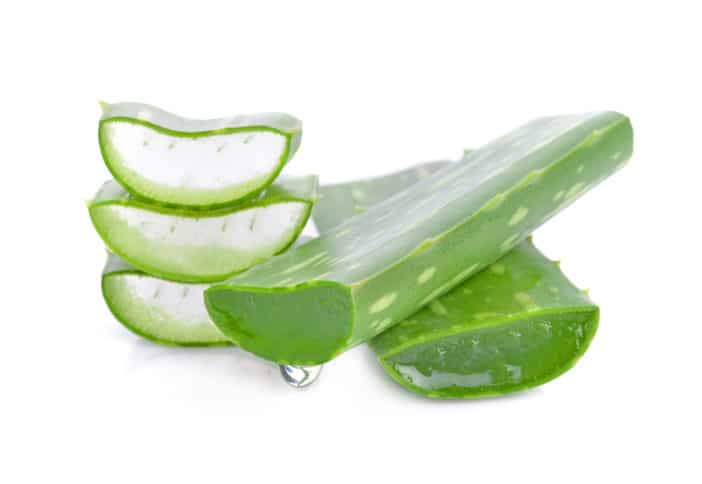Skin Moisturization

Modern cosmetics have not only set themselves the task of emphasising individual beauty, but also of providing the skin with optimum moisture. This so-called skin moisturization keeps the skin healthy and elastic, prevents premature wrinkling and strengthens the skin’s natural barrier. This barrier function is the skin’s most important task: it protects the organism from drying out and from harmful external influences.
The outer skin layer (epidermis) plays a particularly important role as a contact surface with the environment. It must always remain absolutely flexible and supple under the most diverse climatic conditions. Skin moisturization acts as a reliable emollient in this outermost skin layer in a complex system of lipid and protein structures. Normally, human skin would not need any aids to moisturise it, as the necessary substances are constantly being produced during the process of new skin formation. Unfortunately, however, there are numerous factors that contribute to excessive dehydration. These include habits such as excessive sunbathing and excessive bathing in high water temperatures, as well as influences such as dry heating air, wind and cold. The use of overly strong and alkaline body cleansers can also have a negative effect on skin moisturization. Cosmetics therefore use so-called Natural Moisturising Factors / NMF, i.e. moisturising agents (sometimes also called moisturisers), which are integrated into moisturisers and hand creams, body lotions and aftersun products, depending on the application. They balance out or compensate for moisture loss and thus make a significant contribution to healthy, plump and smooth skin.
How skin moisturization works in modern cosmetics
There are various strategies to improve skin moisturization.
One of these strategies is to bind water in the stratum corneum. This outer layer of the epidermis is also known as the stratum corneum and contains, among other things, the pores of the human sweat glands and the openings of the sebaceous glands. Hygroscopic molecules such as urea, glycerol lactate, pyrrolidine carboxylic acid, salts and amino acids attract and bind large quantities of water in this layer.
However, hydrating the skin is not just about moisturising, but also about keeping excessive water loss to a minimum.
Another strategy is therefore to trap the water in the horny layer through the targeted application of a water-impermeable layer. Such an occlusion can be achieved by applying fatty ointments: Vaseline, milking fat and evening primrose oil are well-known examples.
Improving the skin barrier is also an effective way of optimising skin moisturization. Aquaporins, peptides built into the cell membranes, control the transport of water and other substances such as glycerine through the membranes. They are therefore responsible for the distribution of moisture in and around the cells.
Today, these aquaporins can be stimulated by many active ingredients (including vitamins). This is because when the moisture content of the skin decreases, the number of aquaporins also decreases.
A final proven strategy is to hydrate the skin with osmolytes such as betaine and taurine. Osmolytes are tiny molecules that protect the skin cells from drying out and support the natural skin barrier in its protective function. They enable optimum regulation of the skin’s water balance.
The most important agents for moisturising the skin
Glycerine
Glycerine is a natural moisturising factor (NMF) and is very often used to moisturise the skin. It improves the suppleness of the skin, accelerates barrier regeneration and stabilises the skin’s condition.
Urea
Urea is a substance that occurs everywhere in the body, contained especially in the urine of mammals. It is the end product of protein metabolism and is an important moisturising agent in the upper horny layer. Urea is able to break hydrogen bonds and suppress itching. Urea is often used to moisturise the skin.
Sodium lactate/lactic acid
Sodium lactate is often combined with lactic acid in cosmetics and is highly hygroscopic. As a strong buffer, it has a growth-inhibiting effect on bacteria in combination with lactic acid. Basically, the sodium salt of lactic acid is a component of NMF and a very proven moisturising factor.
Ectoine
The water-binding pyrimidine derivative increases the skin’s so-called irritation threshold and is mainly used in skin moisturization products that are specifically aimed at sensitive skin.
Hyaluronic acid
Hyaluronic acid is one of the most well-known and proven high-molecular skin moisturising factors and develops its effect directly on the skin’s surface. It forms an elegant and beautifully silky film on the skin, which also has a protective effect. Hyaluronic acid occurs naturally in the human body and can bind up to 6,000 times its own weight in water.
Sorbitol
Sorbitol is a hexavalent sugar alcohol and a naturally occurring carbohydrate that has water-binding properties and is therefore similar to glycerine. In combination with ethanol, glycerine or glycols, sorbitol develops an excellent antimicrobial effect in preparations that are free of preservatives, but without having a sensitising effect.
Pyrrolidone carboxylic acid
Pyrrolidone carboxylic acid (also known as PCA or pyrrolidone carboxylic acid) is an integral component of NMF, the Natural Moisturising Factor. Its salts bind water in the skin and thus reduce transepidermal water loss. The acid is almost always used as a sodium salt and is very hygroscopic. Around 12.0 per cent of it is found in human skin.
Further information can be found in the corresponding blog post on our website under the title “PCA“.
Glyceryl glucose
The compound of glycerol and glucose is a natural substance that binds water and stimulates aquaporin-3. There are numerous analogue glycosides that behave in a similar way. The substance is used in many moisturising creams and other products to hydrate the skin and combat skin ageing.
Resurrection plants (Myrothamnus)
Myrothamnus is a plant genus of the Myrothamnaceae family. The precious extract, which is obtained from the species Myrothamnus flabellifoila, protects the membrane structures and skin lipids against stress such as dehydration and oxidation thanks to its particularly high content of polyphenols, galloyl quinic acid and trehalose. The extract is also able to strengthen the skin barrier and thus visibly improve the skin’s texture.
Polysaccharides (aloe vera)
Polysaccharides contained in aloe vera have an anti-inflammatory, antifungal, antiviral, antibacterial and immunostimulant effect. They can also bind a variety of harmful substances.
You can find more information in the corresponding blog post on our website under the title “Aloe Vera“.
Skin moisturization: the most important benefit of cosmetics
The fact that modern cosmetic products contribute to skin moisturization has actually become a matter of course and is hardly mentioned anywhere in particular. However, hydrating the skin is actually the most important task that cosmetics have to fulfil. What use are decorative make-up and creams if the skin underneath is dry, tight and prone to premature wrinkling? Moisturization must therefore always be at the heart of good beauty care. Although the various strategies for hydrating the skin listed in the paragraph above are effective on their own, a truly excellent product is characterised by a well thought-out combination of different strategies. Cosmacon is happy to develop such a product that aims for a holistic hydration of the skin and combines the benefits of different hydration strategies.
Sources:
Pharmacological Update Properties of Aloe Vera and its Major Active Constituents.; Sánchez M, González-Burgos E, Iglesias I, Gómez-Serranillos MP.Molecules. 2020 Mar 13;25(6):1324
Hyaluronan Oligosaccharides Improve Rosacea-Like Phenotype through Anti-Inflammatory and Epidermal Barrier-Improving Effects.; Lee SG, Yoon MS, Kim DH, Shin JU, Lee HJ.Ann Dermatol. 2020 Jun;32(3):189-196.
Non-invasive assessment of urea efficacy: A review.; Berardesca E, Cameli N.Int J Clin Pract. 2020 Dec;74 Suppl 187:e13603.
Safety Assessment of Glycerin as Used in Cosmetics.; Becker LC, Bergfeld WF, Belsito DV, Hill RA, Klaassen CD, Liebler DC, Marks JG Jr, Shank RC, Slaga TJ, Snyder PW, Gill LJ, Heldreth B.Int J Toxicol. 2019 Nov/Dec;38(3_suppl):6S-22S.
Safety Assessment of PCA (2-Pyrrolidone-5-Carboxylic Acid) and Its Salts as Used in Cosmetics.; Fiume MM, Bergfeld WF, Belsito DV, Hill RA, Klaassen CD, Liebler DC, Marks JG Jr, Shank RC, Slaga TJ, Snyder PW, Gill LJ, Heldreth B.Int J Toxicol. 2019 Sep/Oct;38(2_suppl):5S-11S.
